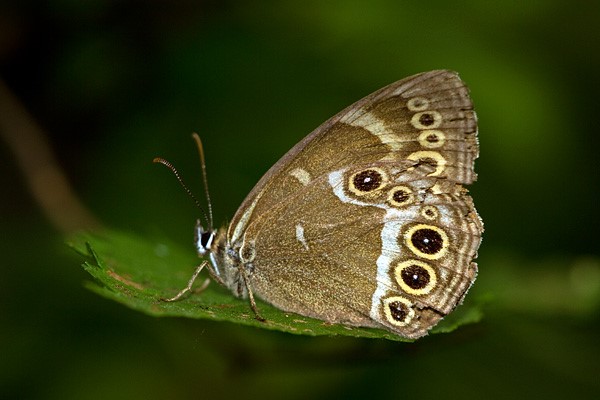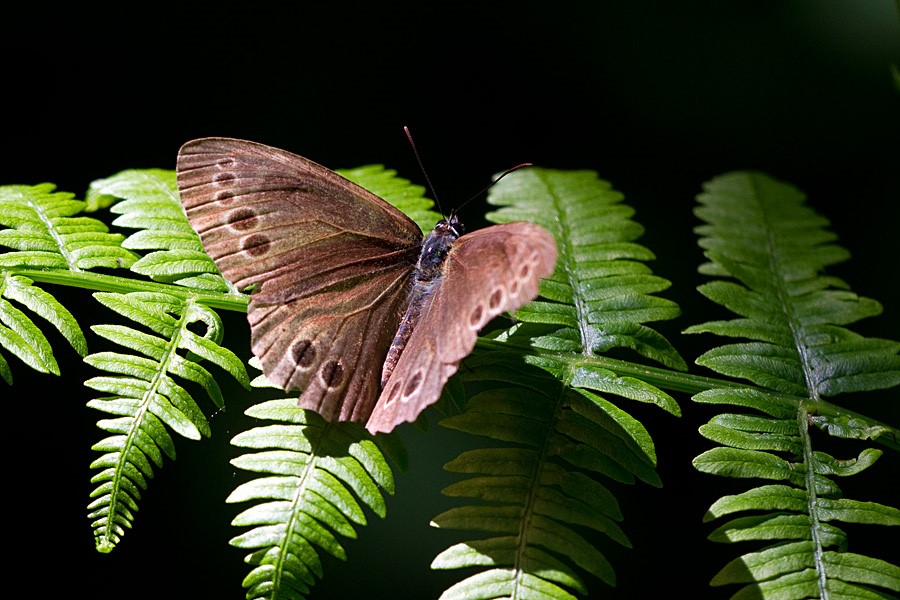Notable occurrences of Quaking Grass Sedge (Carex brizoides) have been found during the botanical survey of the project area. Several stands grow under low canopy closure and/or near glades and forest roads. Witnessing the favourable habitat structure and the presence of the larval food plant led us to systematically survey these plots for Woodland Brown. 5 specimens of the butterfly have been found in two locations near the edges of the project area in 16.06. 9 specimens were observed during the repeated survey in 22.06.
The butterfly has been mentioned in the Natura 2000 documentation of the area. However, local occurrence has not been confirmed yet by published reference or collected and archived specimen, so we consider this data as novel information.
Woodland Brown (Lopinga achine, Scopoli 1763.)
Single-brooded species, the adult flight period is from mid-May to early July. The butterflies do not visit flowers, but feed on damp soil surfaces, dung and carrions. The eggs are laid on the blades of grasses growing in dappled sunlight. The larvae hatch in mid-July, feed on grasses and sedges, primarily on C. brizoides for a few weeks, then hibernate. They resume feeding early in spring, and become fully grown by mid-May.
The Woodland Brown is fond of warm, open places in damp, deciduous or mixed woods with well-developed shrub and herbaceous layers. It is a sporadic Eurasian species with rare and local occurrences. Stable, but small and isolated Hungarian populations are known in Aggtelek and Őrség.
Due to the population decline witnessed throughout the European populations, this species is considered as vulnerable. Woodland Brown is listed on the Habitats Directive Annex 4 and Bern Convention Annex 2, and is protected in Hungary.

















